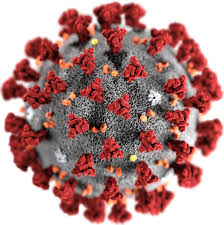The Centers for Disease Control and Prevention website says that the coronavirus “does not spread easily” through touching surfaces or objects. It appears to be a recent change to its guidance on the spread of the virus that causes COVID-19.
Touching infected surfaces has long been a concern about the spread of the coronavirus, but multiple news outlets noticed this week that the CDC’s “How COVID-19 spreads” page appears to have changed the messaging.
It states that the coronavirus “is thought to spread mainly from person to person.” This includes people who are in close contact through respiratory droplets that can be produced when an infected person coughs, sneezes or talks. COVID-19 can be spread by people showing no symptoms.
“Information from the ongoing COVID-19 pandemic suggests that this virus is spreading more efficiently than influenza, but not as efficiently as measles, which is highly contagious,” the website says.
But the CDC now says that while touching surfaces or objects is another way to catch the virus, it’s not the primary way it is spread.
“It may be possible that a person can get COVID-19 by touching a surface or object that has the virus on it and then touching their own mouth, nose, or possibly their eyes. This is not thought to be the main way the virus spreads, but we are still learning more about this virus,” the CDC wrote.
The agency did not release a statement announcing the change. TEGNA has reached out to the CDC to confirm this is a change in guidance and to learn when the change was made.
The CDC also says transmission between animals and people, and vice-versa, is not a way the virus easily spreads. But there have been a few reports of possible cross-contamination.
The CDC continues to suggest that social distancing of at least six feet, washing hands often with soap and water, and routinely cleaning and disinfecting are the best ways to prevent exposure to the virus.
For most people, the coronavirus causes mild or moderate symptoms, and the vast majority survive. But for others, especially older adults and those with existing health problems, it can cause pneumonia or death.










